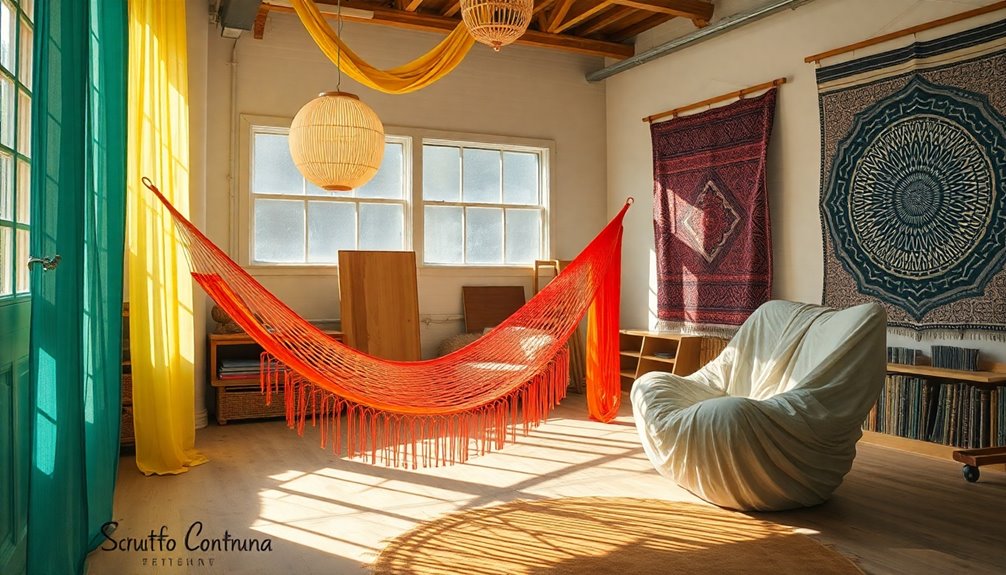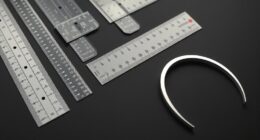You won't believe the innovative uses of proto textiles! Picture customizable 3D-printed fashion accessories that let you express your unique style. Imagine smart textiles that monitor your health, or eco-friendly production techniques that help save the planet. Responsive fabrics adapt to your needs, while waterless dyeing methods reduce waste. And don't overlook virtual showrooms enhanced with AR. There's so much happening in this space, and you're about to discover even more fascinating advancements!
Key Takeaways
- Biodegradable Textiles: Proto textiles made from mycelium and agricultural waste offer eco-friendly alternatives for sustainable fashion production.
- Waterless Dyeing Technologies: Utilizing supercritical carbon dioxide, proto textiles can be dyed without water, significantly reducing environmental impact.
- Energy-Harvesting Smart Fabrics: Proto textiles can harvest energy from body heat or sunlight for powering embedded sensors in health monitoring applications.
- Thermochromic and Responsive Designs: Proto textiles can change color with temperature, allowing for unique, adaptive clothing solutions that enhance user experience.
- Blockchain for Transparency: Proto textiles leverage blockchain technology for secure tracking, ensuring transparency and integrity throughout the supply chain.
Customizable 3D-Printed Fashion Accessories
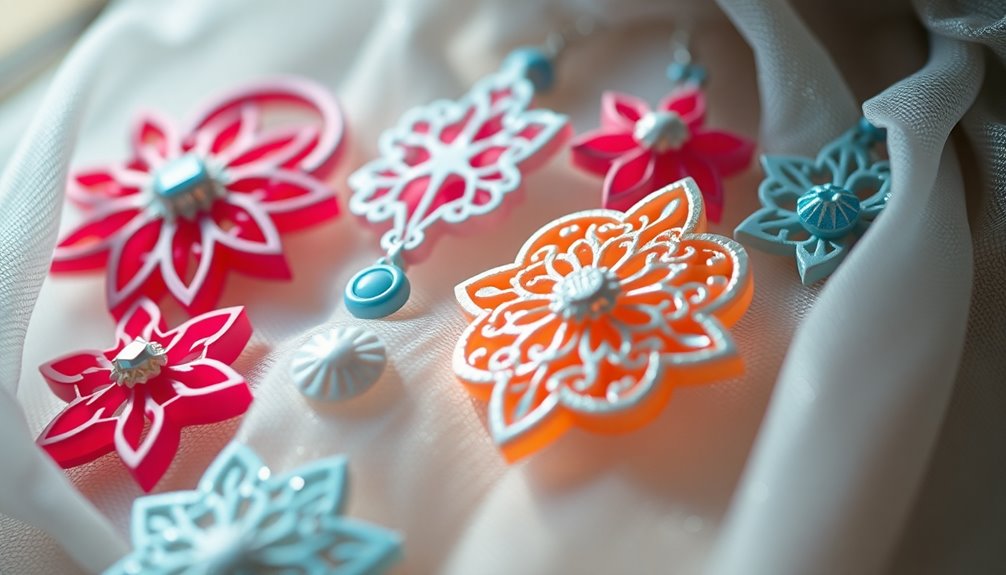
As you explore the domain of fashion, you'll discover that customizable 3D-printed accessories are revolutionizing how we express our personal style.
With intricate details and complex structures, 3D printing allows you to own unique pieces that reflect your individuality. You can choose from a variety of materials, from lightweight plastics to luxurious metals, enhancing both aesthetics and functionality. This innovation brings unparalleled flexibility in design, allowing for creations that were previously unimaginable. The ability to rapidly prototype designs means designers can quickly tweak designs, keeping pace with fashion trends. Imagine bespoke eyewear tailored to your facial contours or avant-garde jewelry that captures your essence.
3D printing also fosters sustainable fashion, marrying style with environmental consciousness. Embrace this innovation, and you'll find that your accessories can truly be one-of-a-kind, transforming your wardrobe into a canvas of self-expression.
Smart Textiles for Health Monitoring

Customizable 3D-printed accessories showcase how technology can enhance personal expression, but the domain of textiles is evolving in even more profound ways with smart fabrics designed for health monitoring.
These innovative textiles can harvest energy from your body heat, ensuring they operate without external power. They integrate sensors to track essential signs like heart rate and respiration, allowing for continuous monitoring of your health. This technology harvests solar energy to provide a sustainable power source for the embedded sensors.
Imagine wearing a smart face mask that detects airborne chemicals, flagging potential health issues. With real-time data transmission to healthcare professionals, you'll receive personalized diagnostics.
Plus, non-invasive monitoring enhances comfort while reducing costs. Smart textiles aren't just about aesthetics; they're revolutionizing how you manage your health.
Eco-Friendly Production Techniques
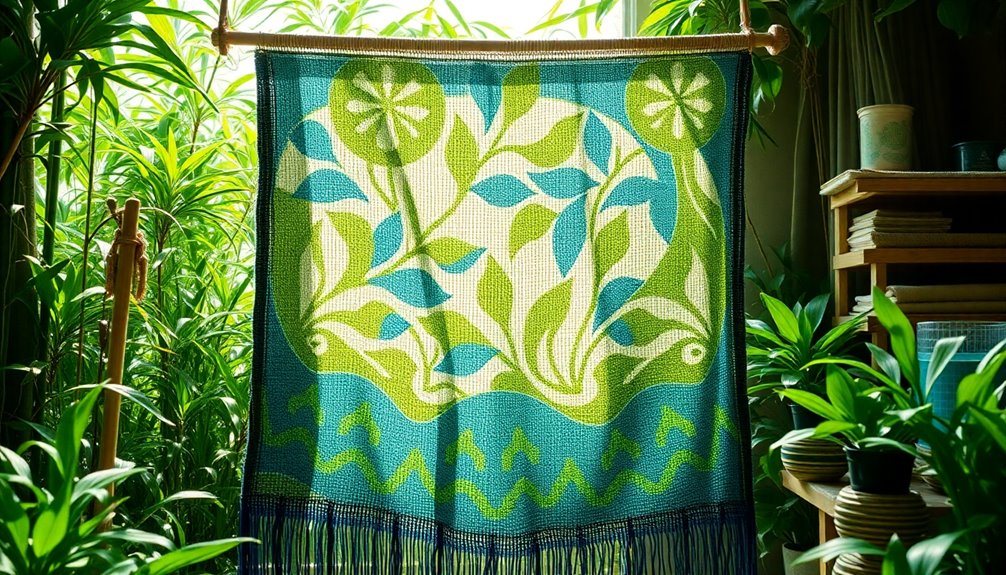
While traditional textile production has often contributed to environmental degradation, innovative eco-friendly production techniques are emerging to change that narrative.
You can explore biodegradable textiles made from mycelium, which are versatile and non-toxic, enhancing everyday wear. Companies are also converting agricultural waste, like banana stems and rice husks, into eco-friendly fibers, reducing the carbon footprint. Biodegradable materials like mycelium not only provide healthier options for skin contact but also showcase non-toxic and fire-resistant properties.
Natural dyes derived from plants and microbial processes offer sustainable alternatives that support eco-friendly fashion. By embracing these techniques, you're not just wearing clothes; you're participating in a movement that reduces landfill waste and promotes sustainability.
Together, these practices pave the way for a cleaner, greener textile industry, demonstrating that style and environmental responsibility can coexist beautifully.
Responsive Fabrics for Adaptive Clothing
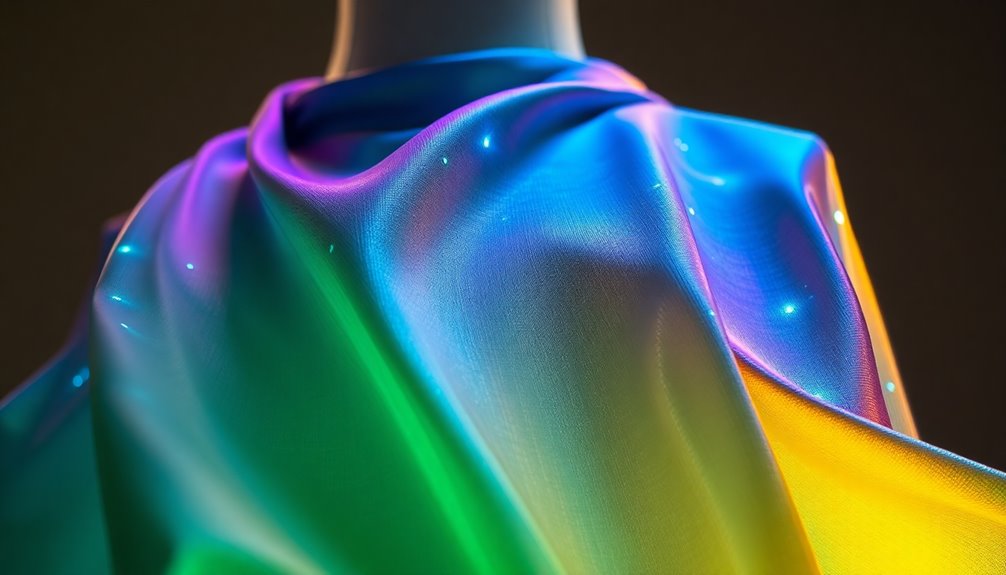
Responsive fabrics for adaptive clothing represent a groundbreaking shift in how textiles can enhance wearers' lives. These innovative materials can change shape or structure in response to stimuli, allowing your garments to adapt dynamically.
For instance, thermochromic fabrics shift color based on temperature, providing instant visual feedback. Additionally, some textiles integrate light, creating enchanting, interactive effects. Soft actuators can enable these fabrics to achieve reversible movements, offering even greater adaptability.
If you have sensory sensitivities, responsive fabrics can minimize overload, enhancing comfort. With conductive materials, you can enjoy added electronic functionality, while smart textiles equipped with machine learning adjust to your movements.
This technology not only improves mobility but also offers personalized solutions, making clothing an essential part of your daily life and independence.
Multi-Material Printing for Unique Textures
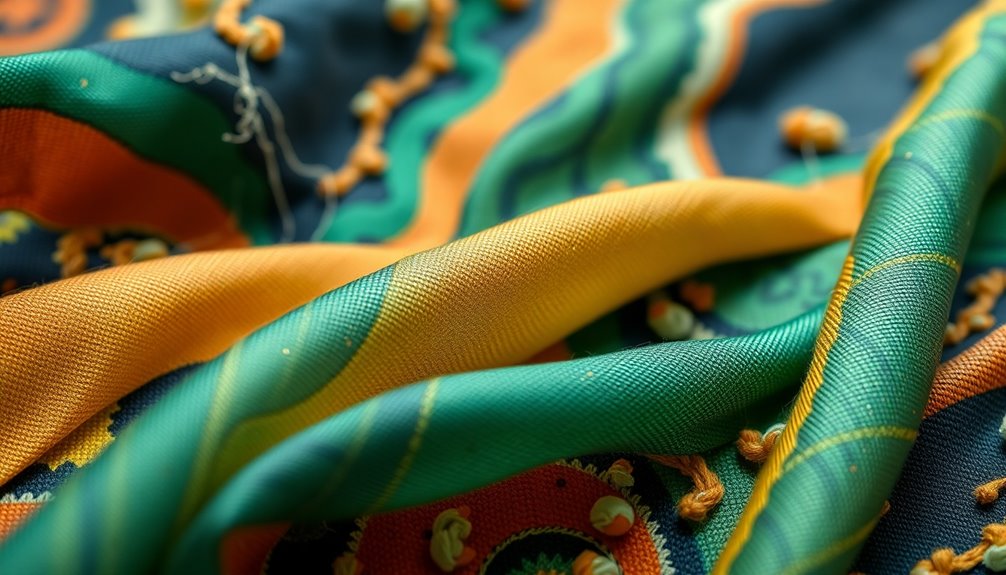
As the world of textiles evolves, multi-material printing emerges as a powerful tool for creating unique textures and designs in clothing and home decor.
Techniques like screen printing provide sharp edges and vibrant colors, while dye sublimation allows for intricate details that stand the test of time. Screen printing is particularly ideal for larger orders, making it a cost-effective solution for those looking to produce bold designs. Additionally, understanding energy consumption can help designers choose the most sustainable options for their production processes.
You'll love how digital textile printing (DTG) offers flexibility, enabling smooth color shifts. Transfer printing lets you apply designs from specialty papers, and reactive printing bonds ink with fabric for stunning hues.
Whether you're crafting custom fashion pieces or lively home textiles, the possibilities are endless.
Embrace the artistry of multi-material printing and transform your creative vision into reality, adding depth and character to every fabric you touch.
Nanotechnology in Fabric Enhancement
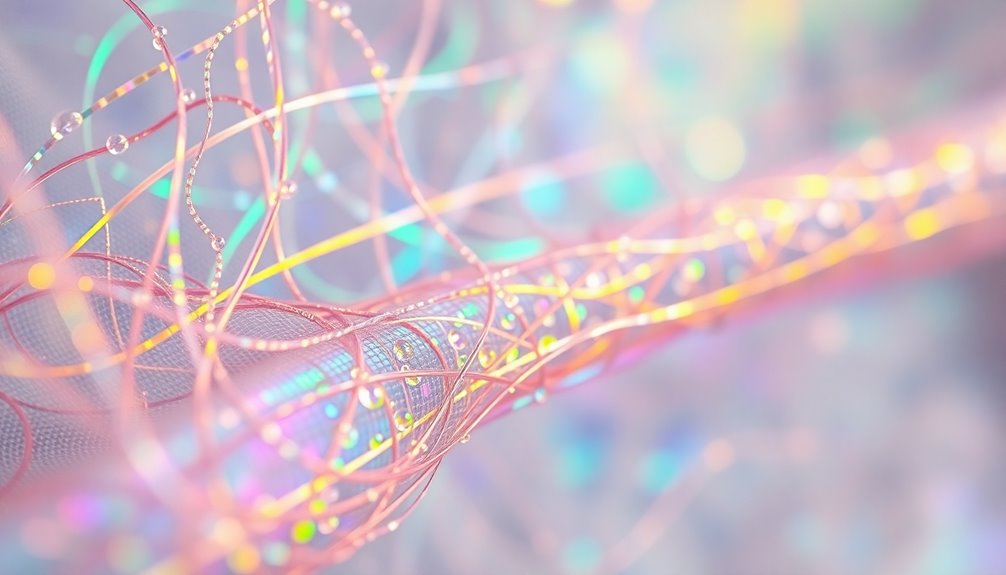
Nanotechnology is revolutionizing fabric enhancement by introducing innovative properties that greatly improve textiles.
You'll find water-repellent fabrics using nano-whiskers that keep materials breathable while repelling moisture. UV protection is another benefit, as modified structures create self-cleaning effects. Furthermore, advanced material properties enable textiles to sense surroundings and even monitor health.
Antimicrobial fabrics, thanks to silver nanoparticles, notably reduce odors and infections. You'll also appreciate the wrinkle resistance achieved through nano-scale structures, ensuring your clothing stays crisp without losing strength.
Enhanced flame retardation properties elevate safety in textiles, making them suitable for various applications.
Additionally, techniques like electrospinning and melt blowing engineer nanofibers that increase durability and softness, ultimately transforming your fabric experience.
These advancements promise a future where textiles perform better than ever.
Interactive Entertainment Fabrics
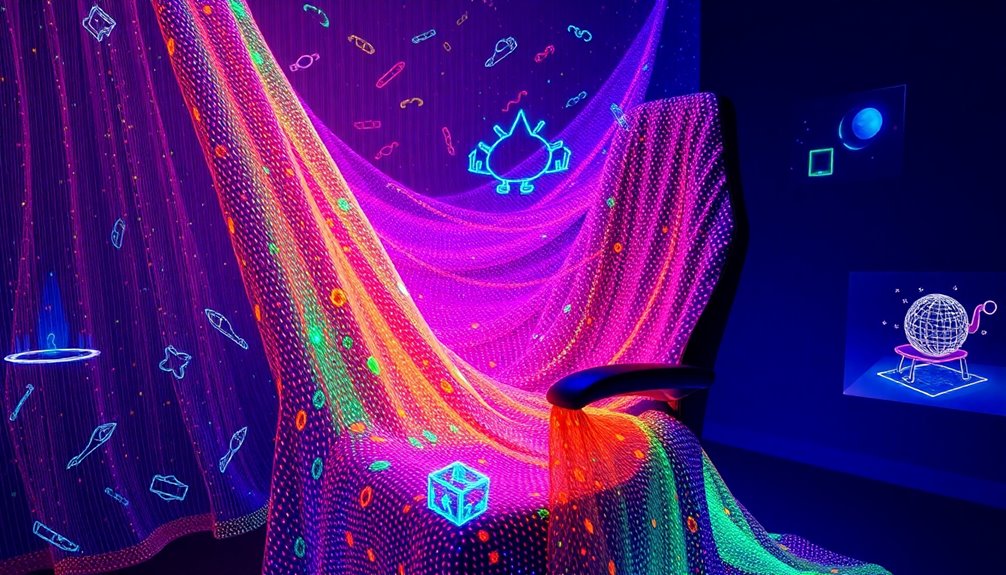
While exploring the intersection of textiles and technology, you'll discover how interactive entertainment fabrics are transforming the way we experience live performances and events. These innovative materials incorporate LED lights, enhancing visual effects in venues and creating immersive atmospheres. Acoustic improvements through specialized fabrics reduce echo and elevate sound quality, making performances more engaging. Imagine wearing clothing with touch-sensitive interfaces that respond to your actions or displaying maps directly on the fabric. With solar-powered threads and Bluetooth connectivity, these textiles not only wow audiences but also offer practical functionality. As designers push creative boundaries, interactive entertainment fabrics are redefining how we connect with art, providing dynamic experiences that evoke specific emotions and atmospheres. Utilizing keyword research tools can further enhance the development of these textiles by identifying trending features that audiences desire. Moreover, the impact of sustainable materials on artistic expression is becoming increasingly relevant in this context.
Waterless Dyeing Methods for Sustainable Fashion
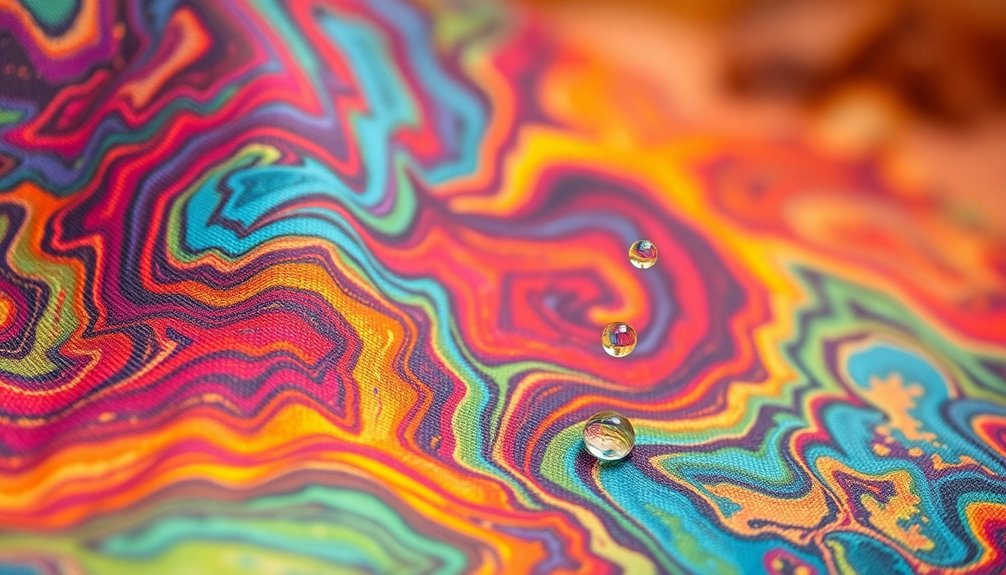
In an era where sustainability is paramount, waterless dyeing methods are revolutionizing the fashion industry by greatly reducing the environmental impact of textile production. By saving up to 134 liters of water for every kilogram of fabric, these techniques address the alarming pollution caused by traditional dyeing practices. Utilizing innovative technologies like supercritical carbon dioxide and air dyeing, you'll find that waterless methods cut energy costs and reduce chemical usage by over 80%. Furthermore, waterless dyeing not only protects water resources but also drives the textile industry towards more environmentally friendly practices. Brands like IKEA and Nike are already adopting these advancements, responding to your growing demand for sustainable fashion. As these methods gain traction, they promise not only high-quality coloration but also a brighter, eco-friendly future for the industry you love.
Virtual Showrooms and AR in Fashion Design
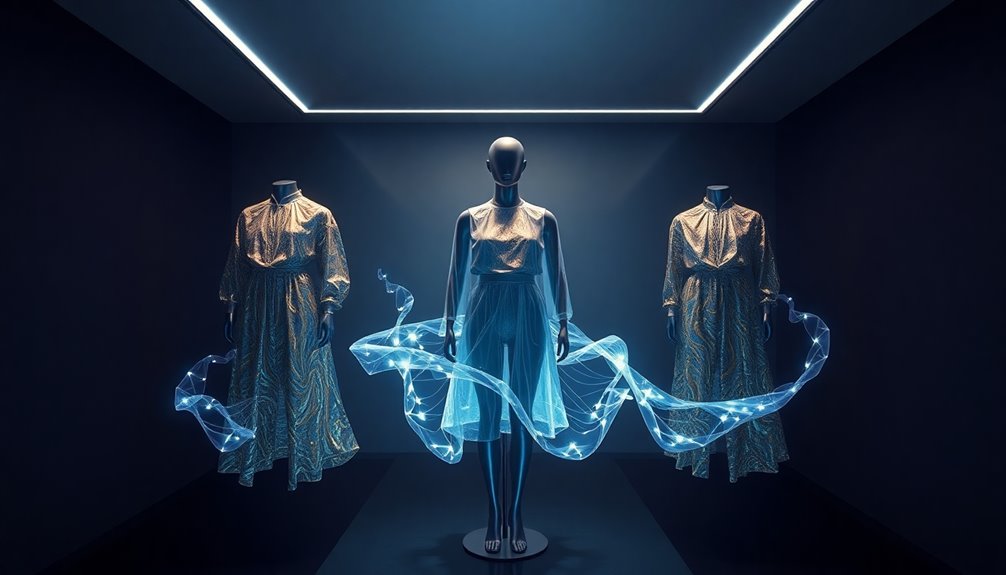
As the fashion industry embraces sustainability through innovative practices like waterless dyeing, it's also turning to technology to enhance the design and buying experience.
Virtual showrooms are revolutionizing how you access collections, allowing you to explore products globally without the costs associated with physical spaces or sample shipping. These digital environments minimize waste and reduce carbon footprints, aligning with sustainability efforts. Networking opportunities through these platforms also facilitate collaborations and partnerships that can lead to innovative designs.
Integrating AR technology lets you visualize designs in 3D, engage with products interactively, and make real-time adjustments, enhancing your design flexibility.
With streamlined B2B sales processes and quicker feedback loops, virtual showrooms not only improve efficiency but also empower you to stay ahead of market trends, ensuring your designs resonate with consumer demands.
Blockchain Technology for Supply Chain Transparency
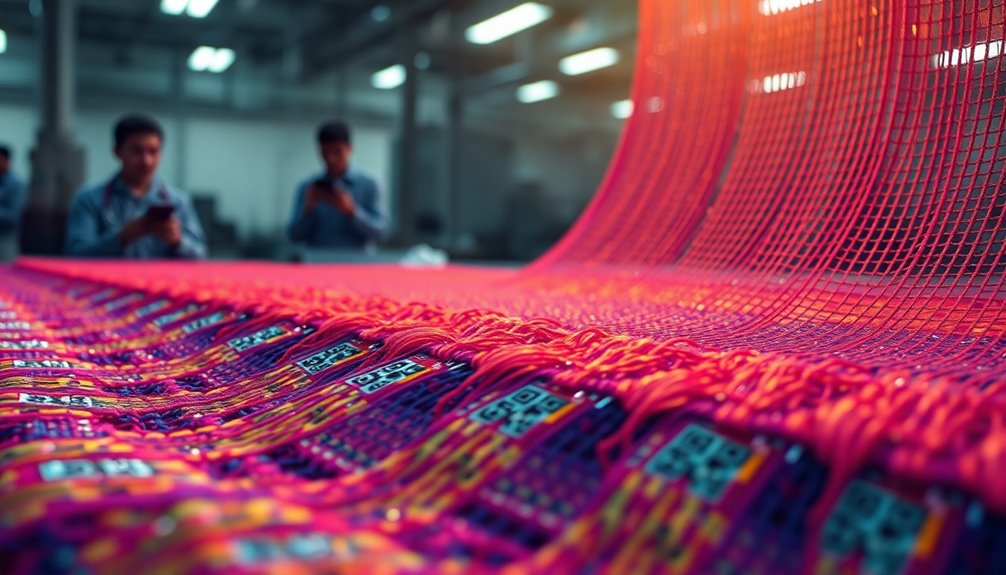
Blockchain technology is transforming supply chain transparency by providing a secure and decentralized method for tracking products from their origin to the consumer.
With its immutable records, you can trust that every transaction remains tamper-proof, giving you peace of mind about product authenticity. This ensures that data integrity is maintained throughout the entire supply chain process. Additionally, the integration of quantum computing advancements is expected to enhance data processing capabilities within supply chains, further improving efficiency and accuracy.
Real-time visibility allows you to monitor your product's journey, ensuring it meets safety standards and ethical sourcing practices.
By using smart contracts, you can automate payments and compliance checks, streamlining operations.
This technology fosters collaboration among stakeholders, enhancing trust and reducing risks associated with disruptions.
Whether in fashion, food, or pharmaceuticals, blockchain empowers you to access accurate information, helping you make informed decisions throughout the supply chain.
Frequently Asked Questions
How Can Proto Textiles Impact the Future of Fashion Sustainability?
Proto textiles can greatly impact fashion sustainability by introducing eco-friendly materials that reduce waste and pollution.
You'll find that these innovative fabrics can lower greenhouse gas emissions and minimize water usage in production.
By embracing these advancements, you can choose garments that not only look good but also support ethical practices.
As consumer demand shifts towards sustainability, you'll see the fashion industry transform, creating a greener future for everyone involved.
What Are the Potential Health Risks of Wearable Smart Textiles?
Did you know that nearly 30% of people using wearable tech report skin irritation?
When you wear smart textiles, potential health risks can arise. These include skin irritation and allergic reactions from certain materials.
Data privacy concerns also loom, as your health data gets collected.
Plus, improper care can lead to bacterial infections.
Understanding these risks is essential to making informed choices about integrating smart textiles into your daily life.
Can Proto Textiles Be Recycled After Their Lifecycle Ends?
Yes, you can recycle proto textiles after their lifecycle ends. Depending on the materials used, various recycling methods can be applied.
For instance, mechanical and chemical recycling techniques can break down the fibers into reusable materials.
However, challenges like mixed fibers and contamination may arise, complicating the process.
How Do Responsive Fabrics Work in Extreme Weather Conditions?
Responsive fabrics work by utilizing advanced materials to adapt to extreme weather conditions.
They incorporate phase-change materials that store and release heat, keeping you comfortable.
Aerogels provide exceptional insulation, while moisture-wicking properties guarantee you stay dry.
In harsh winds, windproof layers protect you from the elements.
These features combine to enhance your experience during outdoor activities, whether you're skiing in the cold or hiking in the heat, assuring you're always prepared.
What Are the Costs Associated With Producing Customized Proto Textiles?
Imagine a bustling factory where vibrant threads dance through machines, transforming into customized proto textiles.
To produce these unique fabrics, you'll face various costs. Raw materials can take up about 31% of your budget, while labor might consume up to 40%.
Energy bills can soar to 28%, and finishing processes could add another 31%.
With careful planning and strategic choices, you can navigate these expenses effectively and create something truly remarkable.
Conclusion
As you journey through the world of proto textiles, imagine a tapestry woven with innovation and sustainability. Each thread tells a story of creativity, from customizable accessories to smart fabrics that monitor health. Picture stepping into a virtual showroom where fashion dances with technology and transparency. With every breakthrough, you're not just witnessing change—you're part of a vibrant revolution. Embrace these exciting possibilities and let your imagination soar in the fabric of tomorrow's fashion!
